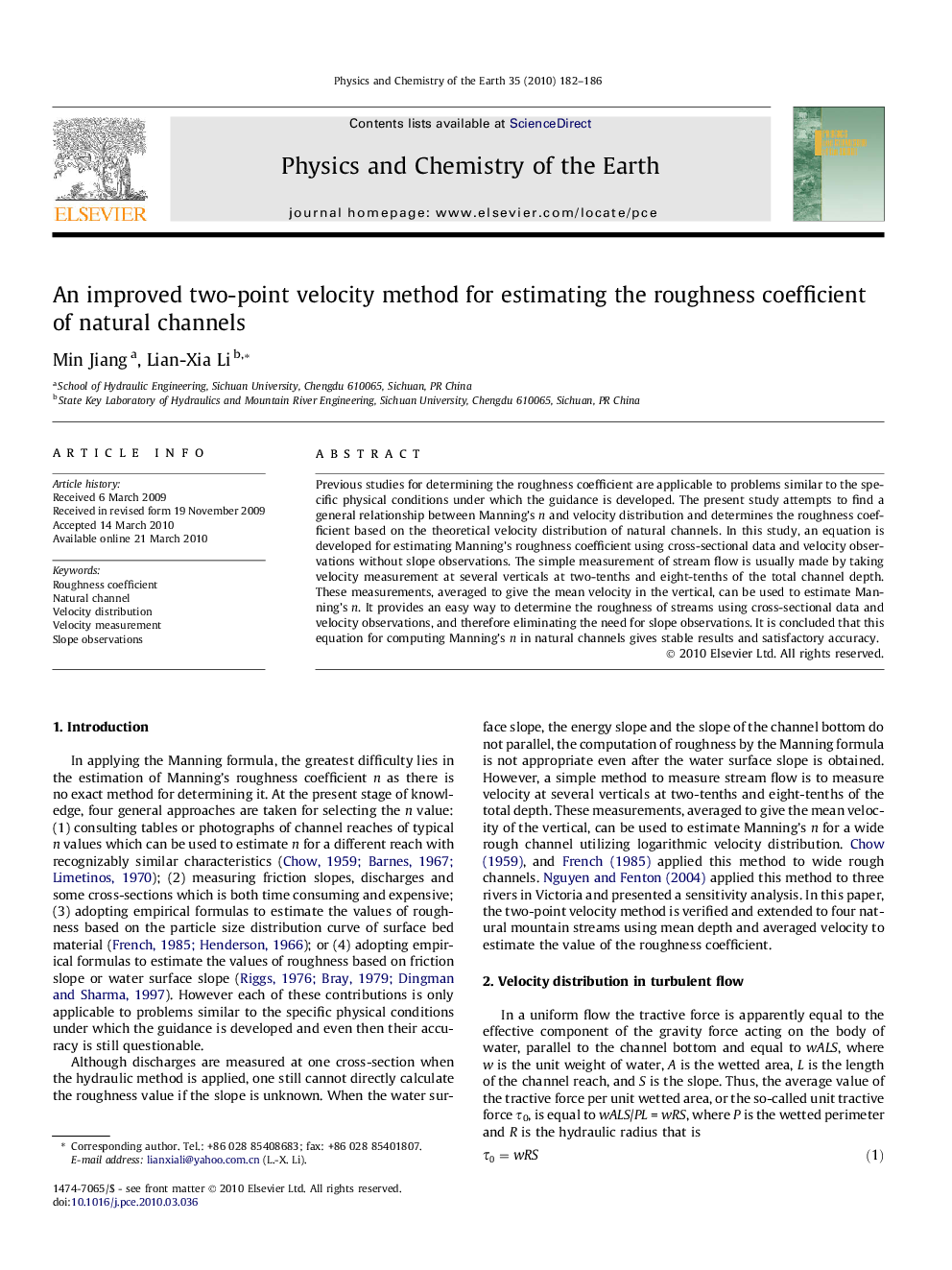| Article ID | Journal | Published Year | Pages | File Type |
|---|---|---|---|---|
| 4722152 | Physics and Chemistry of the Earth, Parts A/B/C | 2010 | 5 Pages |
Previous studies for determining the roughness coefficient are applicable to problems similar to the specific physical conditions under which the guidance is developed. The present study attempts to find a general relationship between Manning’s n and velocity distribution and determines the roughness coefficient based on the theoretical velocity distribution of natural channels. In this study, an equation is developed for estimating Manning’s roughness coefficient using cross-sectional data and velocity observations without slope observations. The simple measurement of stream flow is usually made by taking velocity measurement at several verticals at two-tenths and eight-tenths of the total channel depth. These measurements, averaged to give the mean velocity in the vertical, can be used to estimate Manning’s n. It provides an easy way to determine the roughness of streams using cross-sectional data and velocity observations, and therefore eliminating the need for slope observations. It is concluded that this equation for computing Manning’s n in natural channels gives stable results and satisfactory accuracy.
